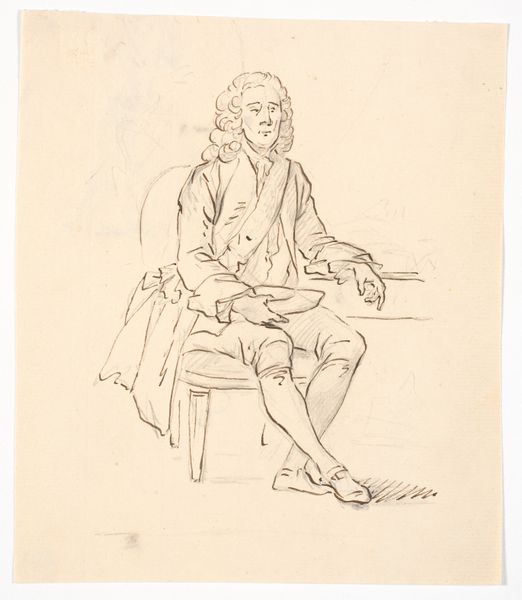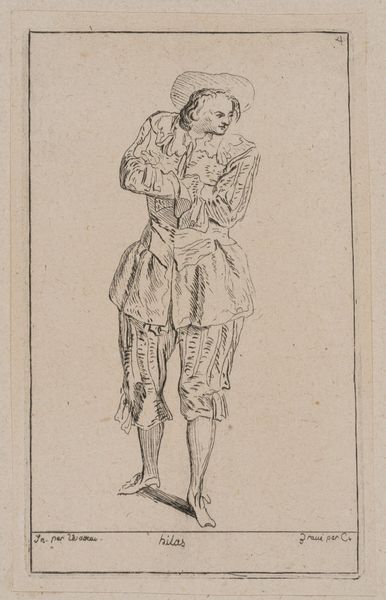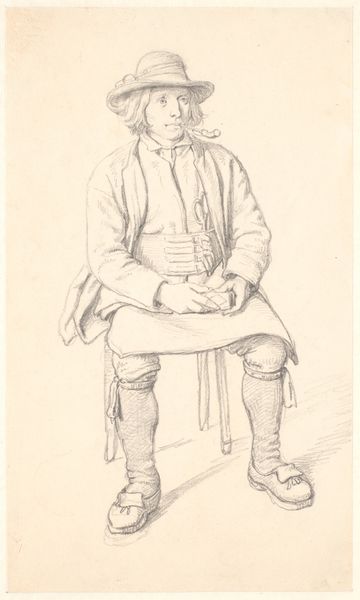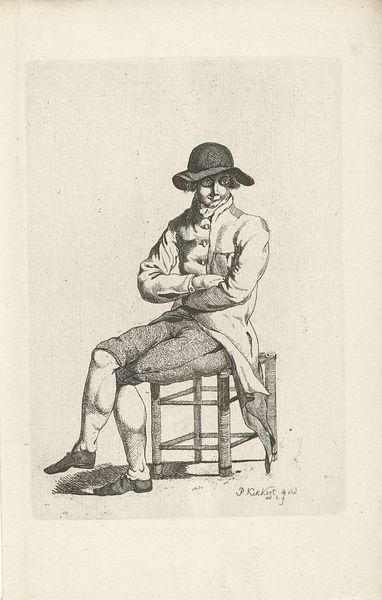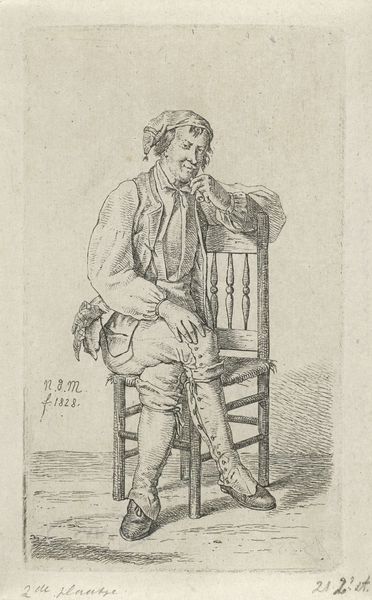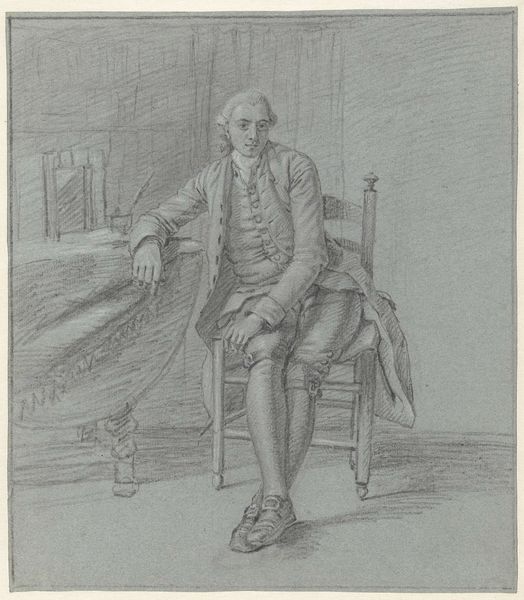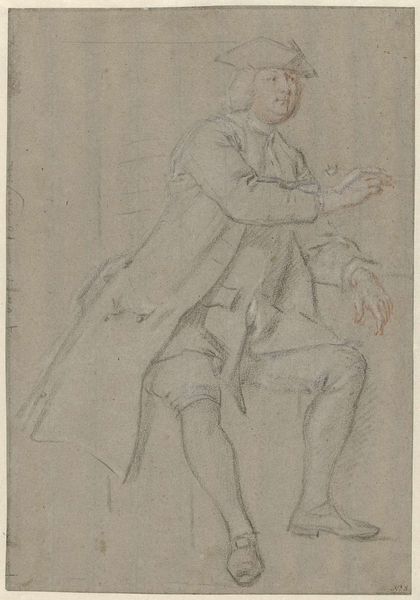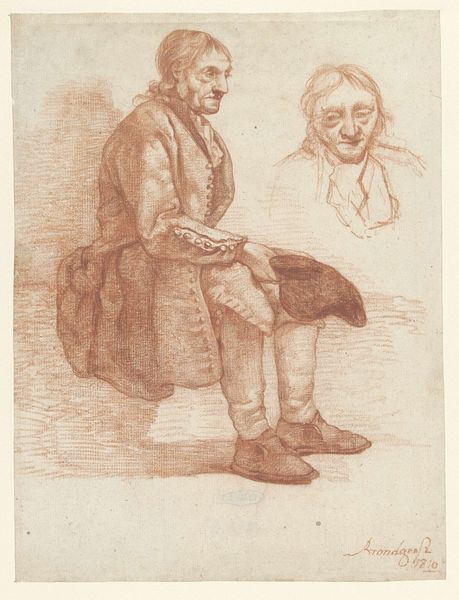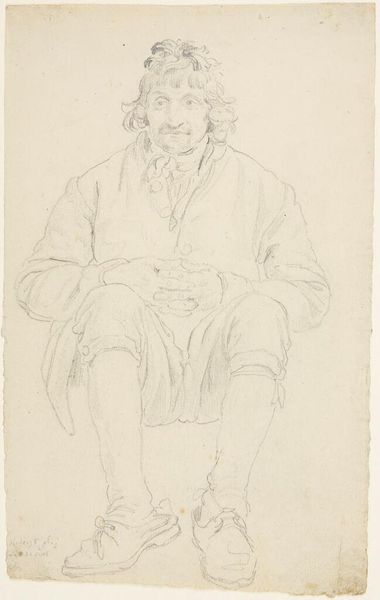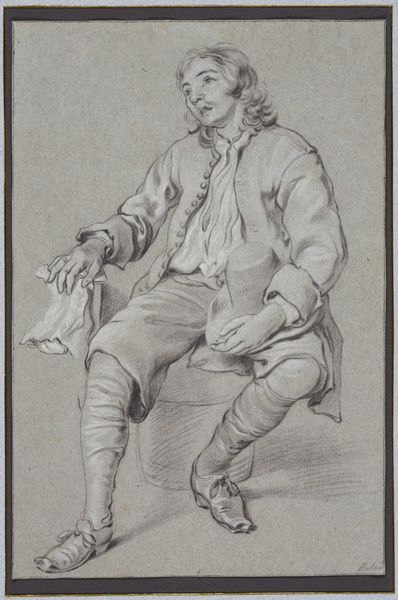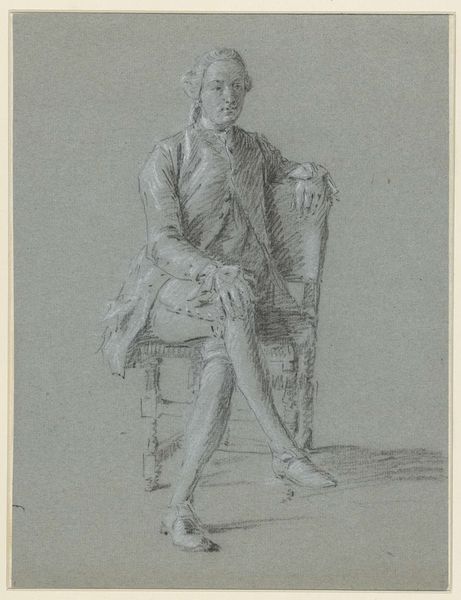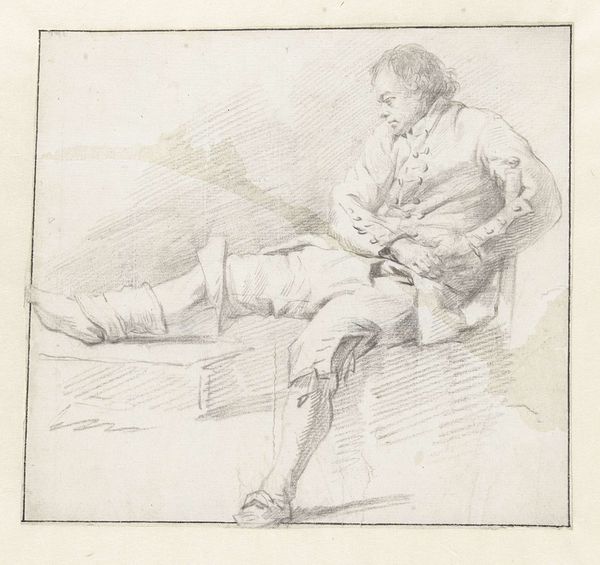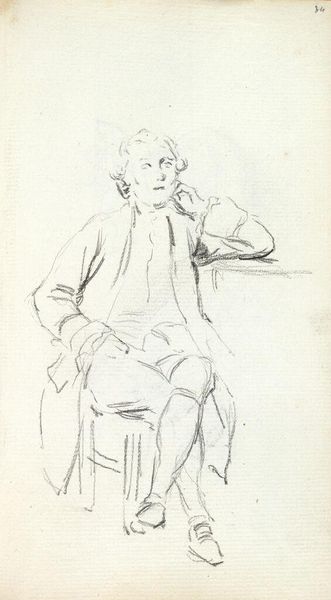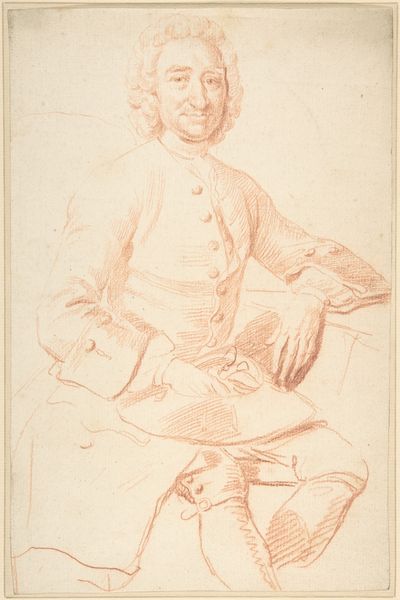
drawing, pencil
#
portrait
#
drawing
#
amateur sketch
#
neoclacissism
#
light pencil work
#
pen sketch
#
pencil sketch
#
old engraving style
#
personal sketchbook
#
idea generation sketch
#
pen-ink sketch
#
pencil
#
sketchbook drawing
#
genre-painting
#
initial sketch
Dimensions: height 195 mm, width 151 mm
Copyright: Rijks Museum: Open Domain
Curator: Here we have a drawing attributed to Guillaume Saint, dating back to around 1769. It’s titled "Zittende man op stoel, slapend," or, "Man Sitting in a Chair, Sleeping." Editor: It strikes me as terribly vulnerable. There's something quite exposed about someone asleep, especially rendered in such delicate, light pencil work. Curator: Saint was working in the Neoclassical style, so there is definitely a harkening back to earlier artistic approaches; what are your impressions when looking at this drawing with a political and social consciousness? Editor: Immediately, I question whose leisure time is being represented? The very act of being able to fall asleep in a chair suggests a degree of privilege and speaks volumes about the social hierarchy of the time. I am curious about the context in which it was made. Was this a genuine moment captured, or a staged tableau reflecting social norms? Curator: That's a key question to consider. The pose, although seemingly relaxed, has echoes of formal portraiture conventions. Sleep, dream states have had diverse associations. Here the pose seems more than a simple candid moment. Editor: And consider the clothing. The style, though rendered with minimal detail, speaks to a specific class and era. The waistcoat, the breeches… they all point to a world far removed from the realities faced by the majority. What are some associations these elements conjure? Curator: Class. Refinement. Perhaps a certain weariness with societal expectations? The closed eyes prevent a personal reading. I suspect it functions as commentary as much as a study. It is possible he wanted to represent the dream life. Editor: A potent visual metaphor, even if unintended, in pointing out the deep inequalities of 18th-century society. Perhaps what strikes me most about it is that so little seems to change… the same power structures still dictate our modern social interactions. Curator: That’s a poignant closing reflection that certainly resonates with contemporary discussions around art, privilege, and representation.
Comments
No comments
Be the first to comment and join the conversation on the ultimate creative platform.
